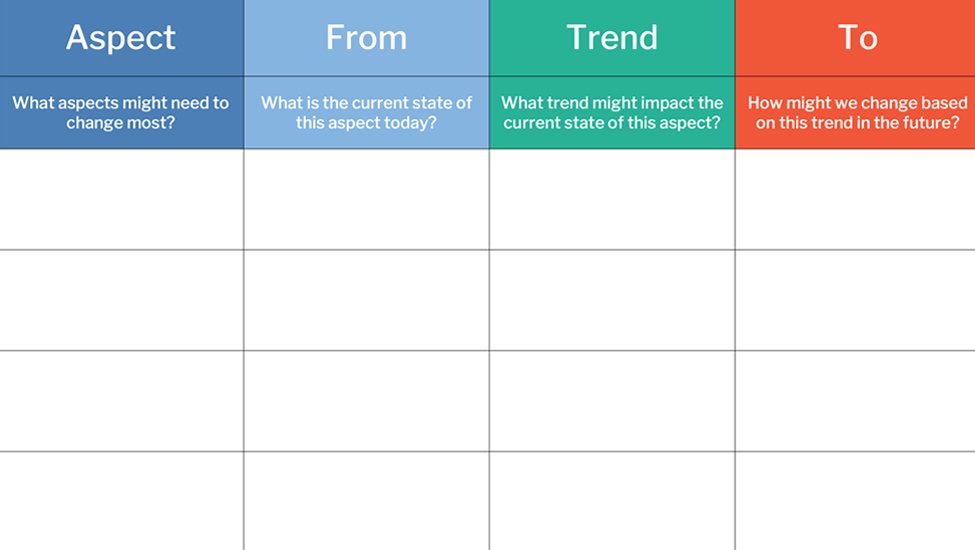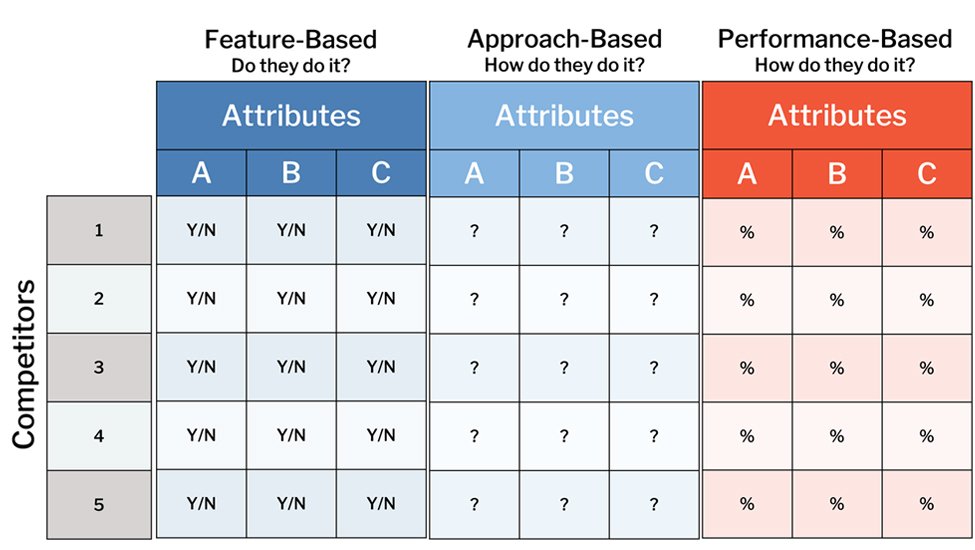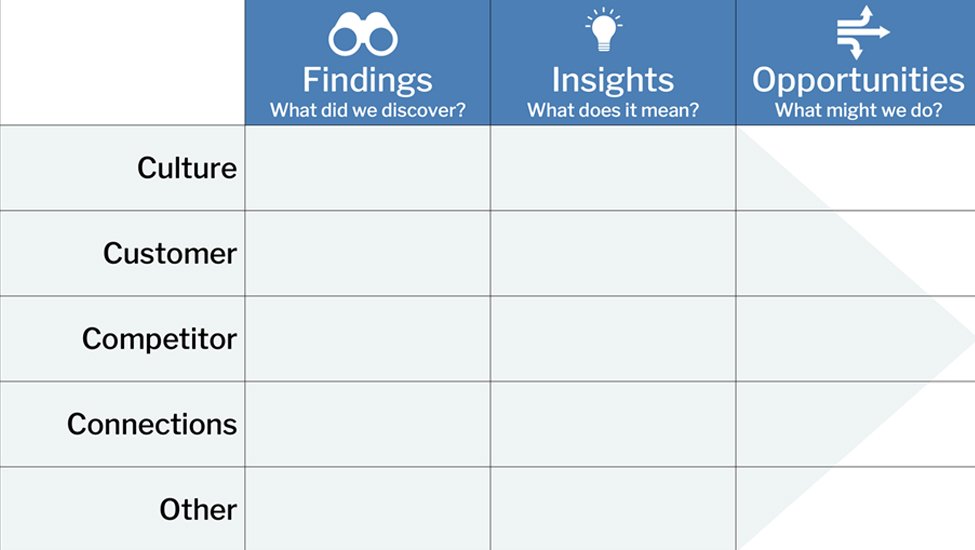
Trend Exploration
Synthesize trends that relate to your initiative, and analyze the resulting implications.

What do competitors currently offer and how do we compare?
Porter, M. “Competitive Strategy: Techniques for Analyzing Industries and Competitors”, Free Press, 1980

Synthesize trends that relate to your initiative, and analyze the resulting implications.

Identify opportunities based on insights from your marketplace research.
This is a project from Kickframe – a digital marketing strategy consulting and training company.